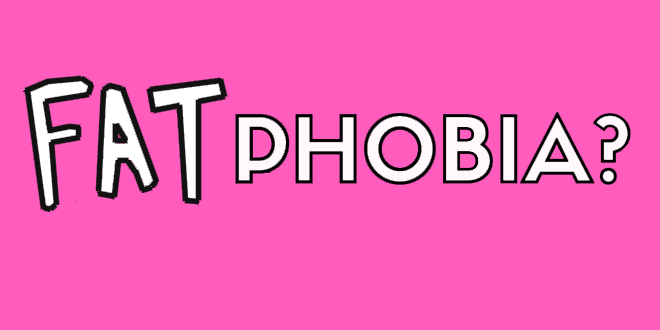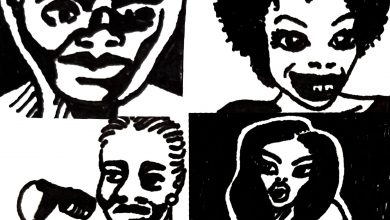Feminism 101: What is Fatphobia?

Illustration by Mrinaalika Sivakumar.
In 2014, Carolyn Hall posted an article on Thought Catalog titled, “6 Things I Don’t Understand About the Fat Acceptance Movement.” The article gained over 6,000 comments and a response from Jes Baker in an article posted on the Huffington Post.
Why is the Fat Acceptance Movement (FAM), which is defined as the social movement seeking to change anti-fat bias in social attitudes, such a controversial topic?
The answer lies in a society that is largely fatphobic. Fatphobia (the fear and/or hatred of fat bodies) perpetuates negative stereotypes that extend discrimination against the majority of bodies within the United States.
The average clothing size among women was a size 14 in 2012, yet most retail stores hardly hold anything above a size 12. As a matter of fact, size 10 and 12 are considered “plus-sized” in the fashion industry, despite being lower the nation’s average. Barbara Ferreira and Diana Veras, two plus-sized models, are gaining traction for their inspiring careers as thicker girls, but they both are sized under the average.
Most people would agree: the media’s portrayal of bodies is harmful, as it fails to represent the bodies in our nation properly. This lack of representation is one of the leading factors in why bigger bodies are discriminated against. Even model Gigi Hadid and actress Jennifer Lawrence have spoken out against negative, fat-shaming comments about their (thin) bodies within the industry.
When extremely skinny bodies are all that are represented and praised, it is no surprise that the nation’s average (and below and above it) is thereby shamed. So why does fatphobia persist if we, as a society, know we’re being misrepresented?
Hall does a great job at answering that very question in her anti-FAM article. At her most “pragmatic,” she discusses health and obesity, citing that fat bodies are inherently unhealthy and medically hazardous.
It is first important to note a level of class privilege when good health and healthy food are intertwined, as access to healthy food is limited for the lower class. Second, an unhealthy fat body deserves just as much respect and rights as a healthy body, because unhealthy, fat people are still people. But finally, the fact remains: many fat bodies are not unhealthy and it is harmful to assume that of any bigger body – especially since “unhealthy” comes with a loaded barrel of other unfavorable stereotypes.
The FAM aims to dismantle these negative preconceived notions. The Fat Phobia Scale was published in “The International Journal of Eating Disorders,” by J.G. Bacon, B.E. Robinson, and J. O’Reilly, in 1993. The scale was revisited and shortened in 2001, with the help of K.E. Scheltema. It measures just how fatphobic a subject is, and it can be found here. The scale is a good resource in noting what social constructions persist against fat bodies, too, as it includes adjectives such as “unattractive,” “inactive,” and “lazy.”
Most people opposing the FAM, like Hall, would likely score high on the scale.
In Hall’s defense, she posted a response to her article a week later, in which she stated “both extremes” of skinny or fat are possibly unhealthy. It’s true. But unfortunately, only fat bodies are systematically discriminated against.
An unhealthy skinny body has a level of thin privilege that cannot go ignored. Thin privilege is the lack of discrimination that comes with a thin body, in the job market, in retail stores, in the doctor’s office, and in the day-to-day. And it’s not black-and-white. A size 2 has more privilege than a size 10, but a size 10 has more privilege than a size 20.
It’s time to dismantle fatphobic views and recognize thin privilege. After all, the Fat Acceptance Movement isn’t a desperate attempt to promote unhealthy habits. It’s in the title: it’s all about acceptance of fat bodies.




